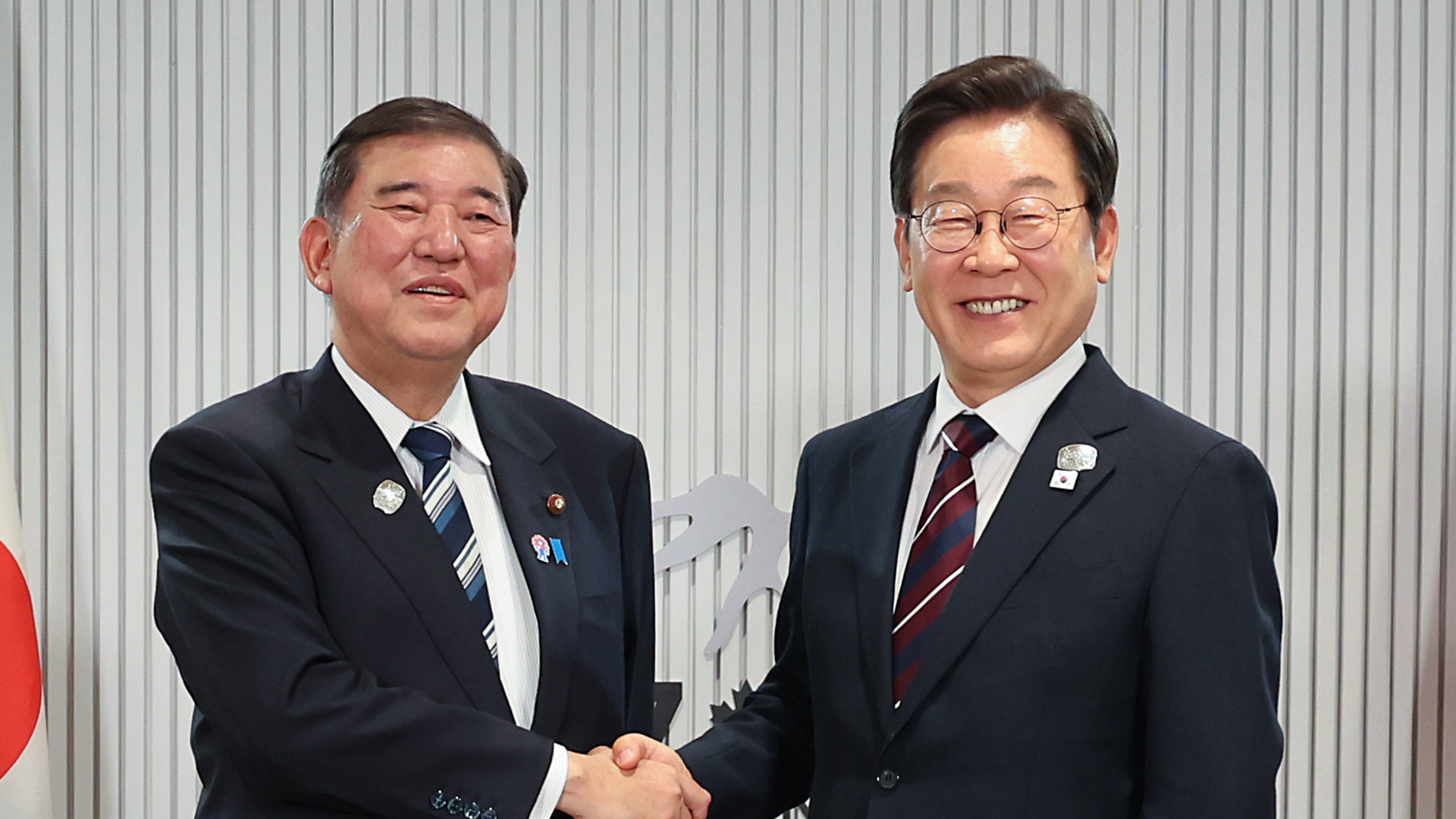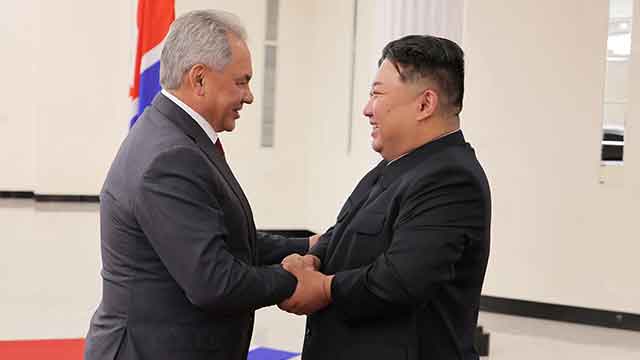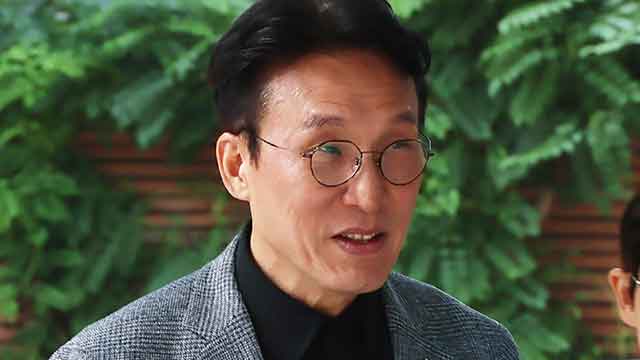[News Today] Cafeterias popular amid lunchflation
입력 2025.06.17 (17:21)
수정 2025.06.17 (17:22)
읽어주기 기능은 크롬기반의
브라우저에서만 사용하실 수 있습니다.
[LEAD]
Lunch prices have jumped so sharply that the term 'lunchflation' has entered everyday conversation. With dining out becoming more expensive, more office workers are now flocking to employee cafeterias.
[REPORT]
This is a cafeteria of Sejong City Hall.
During lunch time, a long line is formed from the service table to the hallway outside.
With lunch costs at restaurants notably higher recently, the nearly 300 seats available at this cafeteria fills up in less than ten minutes.
The meal costs 4,000 won, a little under 3 USD per meal so more and more outsiders as well as city hall employees come to lunch here.
Choi Hee-won/ Sejong City gov't
It is burdensome to eat out. So I use the cafeteria four times a week.
A nearby public agency has even scheduled the order of use, to space out employee usage of the cafeteria.
Kwon Joon-hee/ Sejong City Office of Education
We take turns using the cafeteria due to more users. Departments are divided into three shifts with 15-minute intervals.
The so-called lunchflation, a word combining lunch and inflation, is confirmed in statistics.
Over the past five years, the cost of dining out has grown a whopping 25 percent while the overall consumer price has gained 16 percent.
By item, gimbap and hamburger have posted the highest growth with their prices rising 38 percent and 37 percent, respectively, trailed by tteokbokki and jajangmyeon.
Prices of these relatively light lunch options have grown steeper.
Prof. Lee Eun-hee / Inha University
Even if the cost of dining out grows just 500 or 1,000 won, it would be a considerable monthly hike, with perceived inflation even higher.
An increasing number of office workers are bringing their own lunch to work.
However, lunch prices will likely remain on an upward trend due to a jump in ingredient prices and labor cost, which is also coupled with the higher foreign exchange rate.
Lunch prices have jumped so sharply that the term 'lunchflation' has entered everyday conversation. With dining out becoming more expensive, more office workers are now flocking to employee cafeterias.
[REPORT]
This is a cafeteria of Sejong City Hall.
During lunch time, a long line is formed from the service table to the hallway outside.
With lunch costs at restaurants notably higher recently, the nearly 300 seats available at this cafeteria fills up in less than ten minutes.
The meal costs 4,000 won, a little under 3 USD per meal so more and more outsiders as well as city hall employees come to lunch here.
Choi Hee-won/ Sejong City gov't
It is burdensome to eat out. So I use the cafeteria four times a week.
A nearby public agency has even scheduled the order of use, to space out employee usage of the cafeteria.
Kwon Joon-hee/ Sejong City Office of Education
We take turns using the cafeteria due to more users. Departments are divided into three shifts with 15-minute intervals.
The so-called lunchflation, a word combining lunch and inflation, is confirmed in statistics.
Over the past five years, the cost of dining out has grown a whopping 25 percent while the overall consumer price has gained 16 percent.
By item, gimbap and hamburger have posted the highest growth with their prices rising 38 percent and 37 percent, respectively, trailed by tteokbokki and jajangmyeon.
Prices of these relatively light lunch options have grown steeper.
Prof. Lee Eun-hee / Inha University
Even if the cost of dining out grows just 500 or 1,000 won, it would be a considerable monthly hike, with perceived inflation even higher.
An increasing number of office workers are bringing their own lunch to work.
However, lunch prices will likely remain on an upward trend due to a jump in ingredient prices and labor cost, which is also coupled with the higher foreign exchange rate.
■ 제보하기
▷ 카카오톡 : 'KBS제보' 검색, 채널 추가
▷ 전화 : 02-781-1234, 4444
▷ 이메일 : kbs1234@kbs.co.kr
▷ 유튜브, 네이버, 카카오에서도 KBS뉴스를 구독해주세요!
- [News Today] Cafeterias popular amid lunchflation
-
- 입력 2025-06-17 17:21:17
- 수정2025-06-17 17:22:46
[LEAD]
Lunch prices have jumped so sharply that the term 'lunchflation' has entered everyday conversation. With dining out becoming more expensive, more office workers are now flocking to employee cafeterias.
[REPORT]
This is a cafeteria of Sejong City Hall.
During lunch time, a long line is formed from the service table to the hallway outside.
With lunch costs at restaurants notably higher recently, the nearly 300 seats available at this cafeteria fills up in less than ten minutes.
The meal costs 4,000 won, a little under 3 USD per meal so more and more outsiders as well as city hall employees come to lunch here.
Choi Hee-won/ Sejong City gov't
It is burdensome to eat out. So I use the cafeteria four times a week.
A nearby public agency has even scheduled the order of use, to space out employee usage of the cafeteria.
Kwon Joon-hee/ Sejong City Office of Education
We take turns using the cafeteria due to more users. Departments are divided into three shifts with 15-minute intervals.
The so-called lunchflation, a word combining lunch and inflation, is confirmed in statistics.
Over the past five years, the cost of dining out has grown a whopping 25 percent while the overall consumer price has gained 16 percent.
By item, gimbap and hamburger have posted the highest growth with their prices rising 38 percent and 37 percent, respectively, trailed by tteokbokki and jajangmyeon.
Prices of these relatively light lunch options have grown steeper.
Prof. Lee Eun-hee / Inha University
Even if the cost of dining out grows just 500 or 1,000 won, it would be a considerable monthly hike, with perceived inflation even higher.
An increasing number of office workers are bringing their own lunch to work.
However, lunch prices will likely remain on an upward trend due to a jump in ingredient prices and labor cost, which is also coupled with the higher foreign exchange rate.
Lunch prices have jumped so sharply that the term 'lunchflation' has entered everyday conversation. With dining out becoming more expensive, more office workers are now flocking to employee cafeterias.
[REPORT]
This is a cafeteria of Sejong City Hall.
During lunch time, a long line is formed from the service table to the hallway outside.
With lunch costs at restaurants notably higher recently, the nearly 300 seats available at this cafeteria fills up in less than ten minutes.
The meal costs 4,000 won, a little under 3 USD per meal so more and more outsiders as well as city hall employees come to lunch here.
Choi Hee-won/ Sejong City gov't
It is burdensome to eat out. So I use the cafeteria four times a week.
A nearby public agency has even scheduled the order of use, to space out employee usage of the cafeteria.
Kwon Joon-hee/ Sejong City Office of Education
We take turns using the cafeteria due to more users. Departments are divided into three shifts with 15-minute intervals.
The so-called lunchflation, a word combining lunch and inflation, is confirmed in statistics.
Over the past five years, the cost of dining out has grown a whopping 25 percent while the overall consumer price has gained 16 percent.
By item, gimbap and hamburger have posted the highest growth with their prices rising 38 percent and 37 percent, respectively, trailed by tteokbokki and jajangmyeon.
Prices of these relatively light lunch options have grown steeper.
Prof. Lee Eun-hee / Inha University
Even if the cost of dining out grows just 500 or 1,000 won, it would be a considerable monthly hike, with perceived inflation even higher.
An increasing number of office workers are bringing their own lunch to work.
However, lunch prices will likely remain on an upward trend due to a jump in ingredient prices and labor cost, which is also coupled with the higher foreign exchange rate.
이 기사가 좋으셨다면
-
좋아요
0
-
응원해요
0
-
후속 원해요
0















이 기사에 대한 의견을 남겨주세요.